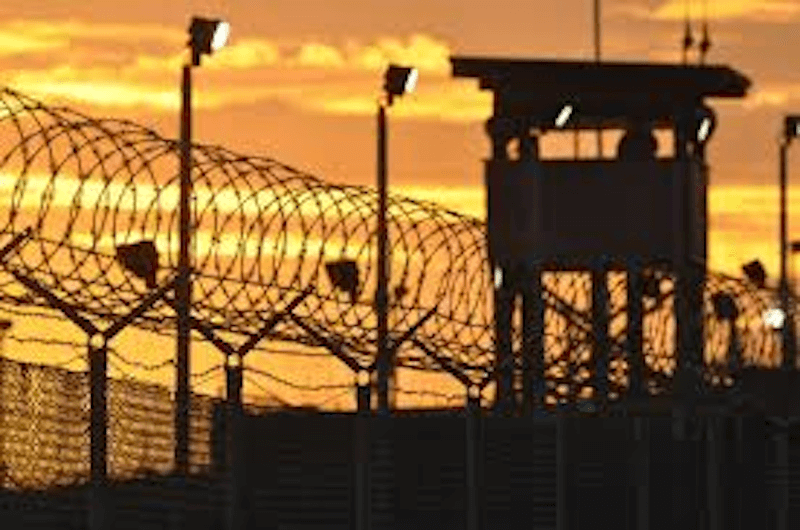
The 12th annual Human Rights Watch Film Festival unveils eight films at Lightbox which will provoke, anger and make us think.
Its focus is international human rights abuses and those who fight them through the powerful medium of documentary films.
Canada, Indonesia, Sudan, the United Kingdom, Brazil, Palestine, Guatemala, the United States and Hungary are represented, as curated by CEO of the Academy of Canadian Cinema Helga Stephenson and TIFF’s Magali Simard, Manager of Film Programmes.
We spoke with Simard about this year’s must-see offerings.

Magali, what a great lineup for the Human Rights Watch Film Festival. What would you say are the top five films to see and why?
Thank you. The lineup is really strong and covers a wide array of issues. These are films made by visionary filmmakers from around the world.
I’d like to highlight Joshua Oppenheimer’s The Look of Silence, his follow-up to the widely acclaimed The Act of Killing. The depth of meaning and history felt throughout the interviews with surviving families of Indonesia’s late ‘60s anti-communist purges is staggering.
And all of this difficult, still-confronting past is experienced through unbelievably beautiful cinematography. It’s an absolute must-see.

Uyghurs: Prisoners of the Absurd
Documentaries bring the real world to light in powerful ways as no other medium can. They become tools for change and inspire action to the plight of the disadvantaged.
We consistently witness filmmakers, artists, activists from around the world facing censure, and often arrest. For example, Oppenheimer’s many collaborators are credited as Anonymous, for obvious reasons.
In recent news, Leslie Udwin’s doc India’s Daughter was being banned from its government for its denunciation of rape culture.
The great Iranian filmmaker Jafar Panahi, after several arrests throughout the years, was charged in 2010 for propaganda against his government and was sentenced a ban on filmmaking (it has since been upheld).
While many artists are forced to stop all activities, many of them are capable, through savvy and brave means, to go forward, and that is one of the most powerful political tools.
Films can be disseminated quickly, their information grasped and injustice exposed. In the end, a film’s primary goal is to be seen, to open its audience’s eyes, and gather witnesses in the process.

Lady Valor The Kristin Beck Story
You watch films through the year for this and for other programmes. When it comes to the Human Rights Festival viewing, do you find it takes a toll on you, seeing how people are suffering in the world?
It’s a lot of difficult content, but many of the films are critical to understanding complex political issues.
The insight brought in through films like Uyghurs: Prisoners of the Absurd, or Lady Valor: The Kristin Beck Story is the very reason a festival like this is necessary.
Most of us read and watch the news, keep up as much as possible with what’s going on in the world, how rights are kept up with or violated, how policies are designed. But it is different to sit through a feature-length film, and in the case of the Human Rights Watch Film Festival, hear a researcher contextualize the film, discuss its issues and update us on current activities.
It’s a much different experience than keeping up with the news. Realities filtered through an art form (film in this case), can open our eyes and minds to see and think differently.

Look of Silence
I’m sure you have many goals for the festival, but I’m sure an important one is to help wake people up. Do you look on this as something of a calling?
The goal is truly to shed a light on issues of human rights violation across the world. We strive to cover many territories, and to be relevant in our onstage discussions.
The audience, as touched upon a bit earlier, becomes witness to parts of socio-political settings they may or may not be familiar with.
One aspect that really binds the films, surprisingly perhaps, is the sheer determination of people in these situations to conquer the terror happening to or around them — and then for filmmakers to take the chance and explore their stories in meaningful ways. It’s about resisting and exposing abuse, and sometimes about resisting and exposing status quo.

Salt of the Earth
Are you still surprised by some of the information you receive watching each year’s new crop of human rights – themed films?
Yes, constantly. The story of the Uyghurs in Guantanamo Bay was something completely new to me.
The film is greatly balanced between the personal stories of the individuals affected and the financial and propagandist transactions that occurred between governments. It was to me one of the most shocking stories I found.
As a film programmer, you have to choose films for Lightbox that are uniquely qualified for the space. Which film meant the most to? Why?
Juliano Ribeiro Salgado’s and Wim Wenders’ The Salt of the Earth is astonishing. The film follows photographer Sebastiao Salgado, as he looks back at his chronicling of famine, war, and genocides through the decades.
The photographs, especially seen on the big screen, carry an unimaginable weight.
It’s a film on journalism, art, and history, made via a personal angle (Juliano is his son), and an immense sense of style. It’s a film as much about the terrors of our recent past, as it is about the people chronicling them.

Human Rights Watch Film Festival. March 24 to April 2 at TIFF Bell Lightbox